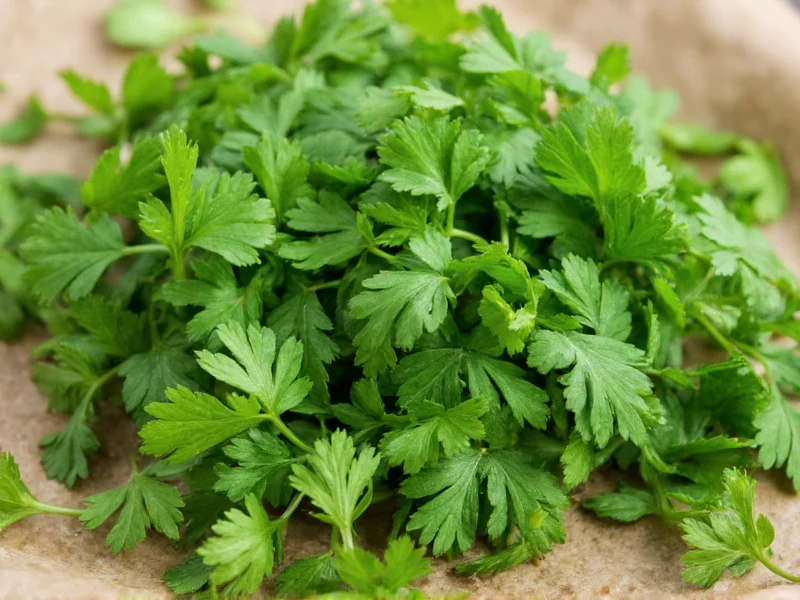When you're in the middle of cooking and realize you've run out of coriander, finding the right substitute can save your dish. Coriander, known as cilantro in its fresh leaf form in the Americas, has a distinctive citrusy, slightly peppery flavor that's essential in many global cuisines. Whether you're making salsa, curry, or a fresh salad, understanding proper coriander alternatives ensures your recipe maintains its intended flavor profile.
Understanding Coriander and Why Substitutions Are Needed
Coriander refers to both the fresh leaves (cilantro) and the dried seeds of the Coriandrum sativum plant. The fresh leaves have a bright, citrusy flavor with soapy notes that some people genetically perceive more strongly. The seeds offer warm, nutty, lemony notes when ground. People seek substitutes for several legitimate reasons:
- Unavailability in local markets
- Personal taste preferences (particularly for those with the "cilantro soap gene")
- Recipe requirements when only one form (fresh or seed) is called for
- Seasonal limitations for fresh herbs
Top Substitutes for Fresh Coriander Leaves
When replacing fresh coriander (cilantro), consider both flavor profile and texture. The best alternatives maintain a similar freshness while complementing your dish's other ingredients.
Parsley (Flat-Leaf Preferred)
Flat-leaf (Italian) parsley offers the closest visual match and mild herbal flavor. It lacks coriander's citrus notes but provides similar texture. Use a 1:1 substitution ratio. This works particularly well as a substitute for coriander in Mexican food like salsas and guacamole. Curly parsley has a slightly stronger flavor and different texture, making it less ideal.
Culantro (Sawtooth Coriander)
Often confused with cilantro, culantro has a stronger, more pungent flavor and longer锯齿 leaves. Use only half the amount of culantro compared to coriander. This tropical herb works well in Caribbean and Latin American dishes as a coriander leaf substitute alternative, especially in cooked applications where its flavor holds up better than cilantro.
Basil and Mint Combination
For Southeast Asian and Indian dishes, a 50/50 mix of fresh basil and mint mimics coriander's bright notes. Use three-quarters the amount of this combination compared to coriander. This blend serves as an excellent fresh coriander replacement in recipes requiring complex herbal notes, such as Thai curries or Indian chutneys.
Substitutes for Ground Coriander Seeds
Ground coriander seeds have a warm, citrusy, slightly floral flavor distinct from the fresh leaves. When substituting:
- Cumin: Provides earthiness with less citrus. Use 3/4 the amount of cumin for coriander seeds. Ideal for Middle Eastern and Indian dishes.
- Caraway seeds: Similar nuttiness with more anise notes. Grind and use 2/3 the amount. Works well in European recipes.
- Fennel seeds: Milder with pronounced licorice notes. Use half the amount. Best for Mediterranean dishes.
| Substitute | Best For | Substitution Ratio | Flavor Notes |
|---|---|---|---|
| Flat-leaf parsley | Mexican, Mediterranean dishes | 1:1 | Milder, less citrusy |
| Culantro | Caribbean, Latin American dishes | 1:2 (use half) | Stronger, more pungent |
| Basil + Mint (50/50) | Indian, Southeast Asian dishes | 3:4 | Bright, complex herbal notes |
| Cumin | Indian, Middle Eastern dishes | 3:4 | Earthy, warm, less citrus |
| Caraway seeds | European dishes | 2:3 | Nutty with anise notes |
Choosing the Right Substitute by Cuisine
The best herb substitutions for coriander in Indian cooking differ from those needed for Mexican cuisine. Understanding these distinctions prevents flavor clashes:
- Mexican recipes: Stick with flat-leaf parsley or a small amount of dill. Avoid strong substitutes that would overpower delicate salsa flavors.
- Indian curries: The basil-mint combination works best as a coriander vs cilantro substitute since it complements other spices without dominating.
- Thai/Vietnamese dishes: Try papalo (mexican papalo) or a touch of lemon zest with parsley for that distinctive bright note.
- Middle Eastern dishes: Use dill or a combination of mint and parsley for tabbouleh and similar salads.
Common Substitution Mistakes to Avoid
Many home cooks make these critical errors when seeking a coriander leaf substitute alternative:
- Confusing coriander leaves with seeds: They're from the same plant but have completely different flavor profiles. Don't substitute ground seeds for fresh leaves or vice versa without recipe adjustments.
- Using inappropriate herbs: Oregano, thyme, or rosemary overpower most dishes that call for coriander.
- Incorrect ratios: Most substitutes require less quantity than coriander due to stronger flavors.
- Adding too late: For cooked dishes, add substitutes like parsley later in cooking than you would coriander since they lack the same heat stability.
Special Considerations for Sensitive Palates
Approximately 21% of the population has the OR6A2 gene variant that makes coriander taste soapy. For these individuals, the best approach isn't substitution but strategic removal. In these cases, consider:
- Using only the stems (which contain less of the offending aldehydes)
- Blanching fresh coriander briefly to reduce the soapy compounds
- Opting for culantro, which some soap-tasters find more palatable
- Creating flavor balance with additional citrus or acid to counter the perception
Final Tips for Successful Substitutions
When implementing a substitute for coriander in curry or other dishes, remember these professional techniques:
- Taste as you go—substitutes behave differently in various dishes
- Add substitutes later in cooking than you would coriander
- Compensate for missing citrus notes with a squeeze of lime or lemon
- For ground coriander seed substitutes, toast whole seeds before grinding for optimal flavor
- When in doubt, use less—you can always add more but can't remove excess











 浙公网安备
33010002000092号
浙公网安备
33010002000092号 浙B2-20120091-4
浙B2-20120091-4